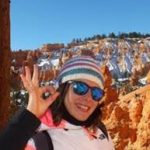Team Research Forum: Rehabilitation of Clear Lake
In a multi-year project (2018-2020) funded by the California Department of Fish & Wildlife, researchers from UC Davis Center for Regional Change (CRC) and UC Davis Tahoe Environmental Research Center (TERC) conducted applied research to guide the Blue Ribbon Committee for the Rehabilitation of Clear Lake in improving the environmental quality and economic outcomes for the communities surrounding Clear Lake in Lake County, California.
Join the UC Davis Office of Research, Dr. Jonathan London (CRC), Dr. Geoff Schladow (TERC) and Dr. Alicia Cortes (TERC) in a discussion about this research and the rehabilitation of Clear Lake.
View Recording
Placing people in the watershed: Holistic community development in the Clear Lake Region

Dr. Jonathan London
Associate Professor, Department of Human Ecology
Director, Center for Regional Change
Co-director, Community Engagement Core, Environmental Health Sciences Center
Working with a diverse array of community partners, the UC Davis Center for Regional Change conducted action research on community development and well-being in the Clear Lake region to inform local efforts to support the health and well-being of local residents. This presentation shares the highlights of this research and reflects upon the role of social science in applied research on coupled human-ecological systems.
Challenges and Opportunities at Clear Lake, California
Dr. S. Geoffrey Schladow 
Professor, Department of Civil and Environmental Engineering
Director, Tahoe Environmental Research Center
At two million years Clear Lake is the oldest lake in the US. In just the last two hundred years its history has been highly varied. From a major gathering area for numerous native American tribes, to a vacation destination for California’s glitterati, to a call out in Rachel Carson’s Silent Spring as the site of bird shell thinning due to DDE, to its declaration as an EPA Superfund site on its shores, and most recently to the site of some of California’s most persistent harmful algal blooms, Clear Lake has endured a lot.
With funding from the State of California, our multidisciplinary team is leading the research effort to address the rehabilitation of Clear Lake. While not expected to occur overnight, the identification, testing and implementation of restoration actions is expected to be the first step in the environmental and economic revival of this important, but neglected region. Working with local stakeholders, Indian nations, other research institutions and government Agencies, a team of over 25 faculty, researchers, graduate students and undergraduates has been laying the groundwork for this long-term endeavor.
Predicting the Occurrence of Cyanobacteria Blooms in Clear Lake
Dr. Alicia Cortes
Assistant Project Scientist
Tahoe Environmental Research Center
Civil and Environmental Engineering
UC Davis
Certain environmental conditions in water bodies can intensify algae growth, causing algal blooms. Blooms with the potential to harm human health or aquatic ecosystems are referred to as harmful algal blooms or HABs. In freshwater systems, cyanobacteria are microorganisms that can produce HABs. They can harm people, animals, aquatic ecosystems, the economy, drinking water supplies, property values, and recreational activities, including swimming and commercial and recreational fishing.
More frequent and potentially toxic cyanobacteria blooms at Clear Lake justify our work directed at understanding what controls the water quality and the ecological health in Clear Lake and creating predictive tools that enable stakeholders to evaluate future options. In this presentation, we will show the predictive tools we are developing to forecast the onset, location, and movement of CyanoHABs in Clear Lake, and the restoration strategies to reduce cyanobacteria blooms.







